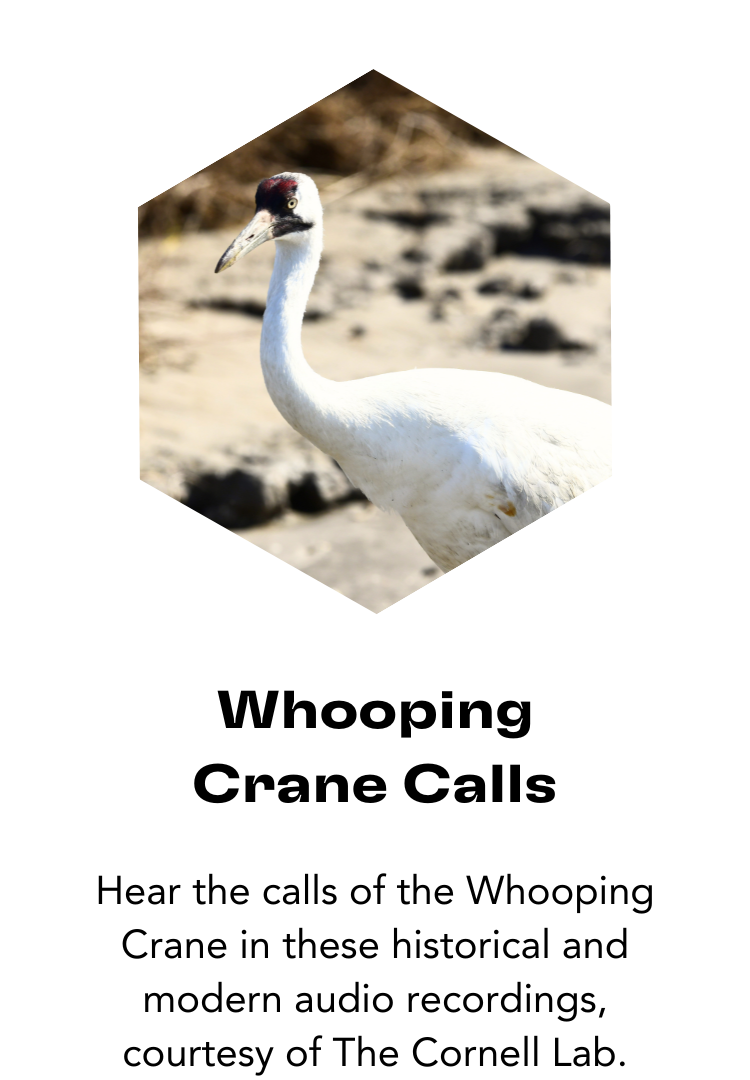
Triptych, Whooping Crane Landing

The coastal habitats in and around Aransas National Wildlife Refuge in Texas near the Gulf of Mexico are the final stop for Whooping Cranes on their journey from Wood Buffalo National Park. Here, they will spend the winter months raising their young. Food sources that will contribute to egg and young survival, such as blue crabs, are abundant here, making it a critical habitat area. Whooping Cranes are fully matured and capable of breeding themselves on average at five years old. At around one year old, the physical traits of juvenile cranes resemble adults.
Interestingly, Whooping Cranes are the tallest bird in North America, capable of reaching heights of 1.5 meters / 5 feet, and have an impressive wingspan of about 2.1 meters / 7 feet. They are easily spotted not just by their size, but their bright, snowy white plumage, long neck, black wingtips (which are hidden except during flight), and long black legs which trail behind during flight. Whooping Crane plumage differs greatly between ages, with adults sporting a distinct red crown and white feathers, and juveniles a rusty brown on their head and body. Whooping Cranes can also be identified by their distinct calls, loud and trumpet-like “whooping” which can travel over several kilometres. During mating and nesting, calls become even louder as bird pairs call together during courtship rituals and when defending their breeding territory.
The red crown on the head of the adult Whooping Cranes is not feathers – it is actually their skin! The size and colour of this crown can change when individuals are territorial or mating. The black wingtip feathers (also called primary feathers) serve another surprising function. The melanin pigment that gives these feathers their colour increases their strength and durability, which is critical since these feathers receive the most wear and are important for propelling flight. Darker primary feathers are not exclusive to Whooping Cranes – keep an eye out for dark wingtips on other species!
Dr. Bondar Bondar photographs Whooping Cranes from the ground at Aransas National Wildlife Refuge, Texas.
As juvenile cranes begin to mature over the wintering months in Texas, the flock’s flight back to Wood Buffalo National Park for the next summer will be much more efficient. Fall migration to Texas usually takes approximately 30 days, whereas spring migration back to Wood Buffalo National Park takes closer to 20 days. Once they arrive another migration cycle begins, and the many challenges they face continue.
In Aransas National Wildlife Refuge, Whooping Cranes are currently threatened by habitat loss and degradation caused by human development, water pollution, environmental change and extreme weather, and danger from power lines on wind farms.
Explore more below to learn about the unique traits of Whooping Cranes!


Sources
- All About Birds: https://www.allaboutbirds.org/guide/Whooping_Crane/overview
- Hinterland Who’s Who: https://www.hww.ca/en/wildlife/birds/whooping-crane.html
- Crane Trust: https://cranetrust.org/who-we-are/what-we-do/conservation/ecological-overview/whooping-crane.html